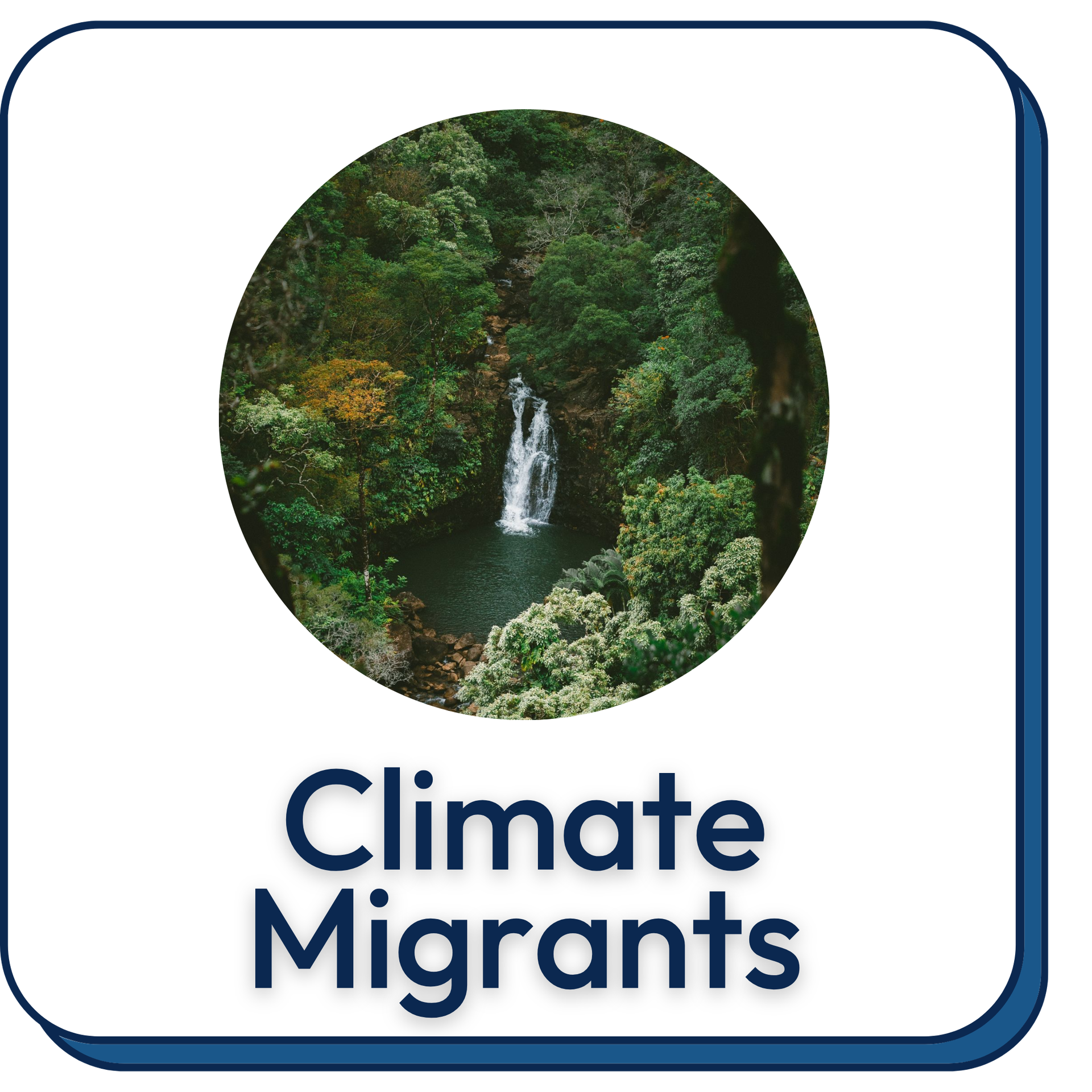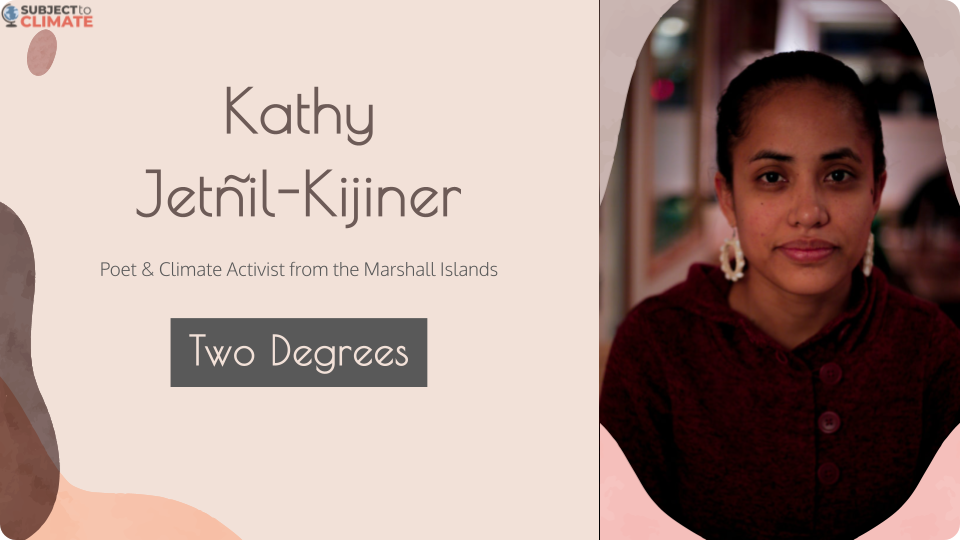The concept of Environmental Justice is an important, complex topic that examines how climate change disproportionately impacts marginalized communities. Teaching our students about environmental justice empowers them to be compassionate and advocate for change in the present and future. It can be challenging to know how to teach environmental justice when there are so many other demands on teachers. At SubjectToClimate we know how busy teachers are, so we have assembled a variety of resources that will engage students on this crucial topic.
How to Teach about Environmental Justice

As defined by The United States Environmental Protection Agency, "environmental justice is the fair treatment and meaningful involvement of all people regardless of race, color, national origin, or income, with respect to the development, implementation, and enforcement of environmental laws, regulations, and policies."

This easy-to-read, straightforward article introduces students to the history of the environmental justice movement and the important work of Dr. Robert Bullard. Students will learn about the strong correlation between race and exposure to environmental hazards, and they will examine actions taken by people in the environmental justice movement to ensure that environmental laws are designed and enforced to protect all communities.
The timeline in the article will help students better understand the sequences of events documenting the ongoing pattern of racism that has impacted Black communities and other communities of color. The article links to scientific studies, government websites, and other articles, giving students the opportunity for further learning on the topics discussed.
This SubjectToClimate lesson teaches students about primary and secondary sources using the topic of climate migrants. The lesson opens with students listening to the spoken word poem, “Two Degrees,” by Marshallese poet and activist Kathy Jetn̄il-Kijine. In the poem, students learn that the Marshall Islands have been disproportionately impacted by climate change, putting a strain on the people who call it home. Students then spend some time reflecting on how our connections to a place and the way we talk about that place can change the way we look at it.
Through the examination of primary and secondary resources, students encounter stories about climate migrants, people who were forced to leave their homes due to the impacts of climate change. Students learn that one way to support climate migrants is by educating others about the challenges they face. Students work in groups to research the topic and create posters that can be displayed in a common area of the school.
This collection of resources includes separate lessons for elementary, middle, and high school students. The elementary school course consists of two 40-minute sessions, the middle school course consists of three 55-minute sessions, and the high school course consists of four 55-minute sessions.
Step-by-step lesson plans show teachers how to use the texts, videos, images, worksheets handouts, and discussion questions to deliver an impactful lesson on environmental justice. Students will come away from the lesson feeling empowered and prepared to fight for environmental justice in their own communities.

Inquire
Teacher shares useful framing and definitions. Then students will explore the Mapping Inequality tool.

Investigate
Students explore various environmental justice case studies in groups. Each case study includes a specific city and one of the following: asthma rates, extreme heat, air pollution, and urban tree cover. Students will connect redlining to their case studies.

Inspire
Students discuss how redlining is related to their case studies and what should be done about these issues. Finally, students complete a written reflection.

This environmental justice lesson plan helps students understand connections between the harmful practice of redlining and environmental justice. Students will explore the EPA’s Environmental Justice Screening and Mapping Tool and work in groups to read and discuss various environmental justice case studies. The case studies focus on topics such as asthma rates, extreme heat, air pollution, and urban tree cover. Students will discuss how redlining relates to their case study and ponder how to rectify these issues. Finally, students complete a written reflection.
Teachers will appreciate that this well-designed lesson includes an easy-to-follow lesson plan document with tips for how to speak about redlining and systemic racism, along with a Google Slides prsentation and a student document.
In this riveting TED video, David Lammy, a member of the British Parliament and advocate for climate justice, explains the connection between Black Lives Matter and the climate crisis. Students will learn how Black and other minority groups have been excluded from the environmental movement, even though they are far more likely to be impacted by the effects of climate change. Lammy draws a direct connection between colonialism, the extraction and exploitation of natural resources, and climate disasters in places like Guyana, where Lammy’s parents are from. Students will learn that the climate crisis cannot be solved unless Black people around the world hold leadership positions within the environmental movement.
Communications, journalism, and ethics classes could discuss the situation that Lammy details in the video in which the Associated Press cropped Ugandan activist Vanessa Nakate out of a photograph from the World Economic Forum. Students could also reflect on Nakate's response to being cropped out of the picture. Civics classes could analyze policies in different countries that address the issues raised in this video.
This video is from a panelist event featuring four Indigenous activists who share their perspectives on environmental and climate justice and discuss their work in this space. The video introduces students to different forms of Indigenous knowledge, the critical role Indigenous people play in protecting the environment and solving climate change, and the teachings of various tribes in North America.
This resource helps students understand the importance of Indigenous involvement and leadership in the fight against climate change. As a follow-up activity, students could research Indigenous-led environmental initiatives in their area. This video would also work well in American history classes to help students understand how the American government’s actions continue to impact the lives, land, and culture of Indigenous peoples. Economics classes could use this video to discuss how efforts to maximize economic prosperity have resulted in environmental injustice.

Inquire
Students explore a spreadsheet, map, and two graphs showing urban forest cover and its connection to wealth and race.

Investigate
Students watch two videos and take notes on the benefits of trees.

Inspire
Students complete a written reflection noticing the distribution of trees near their homes.

This lesson is about the distribution and density of trees in urban areas and how that relates to environmental justice. Students will explore interactive tree equity score maps along with two graphs showing urban forest cover and its connection to wealth and race. Students will watch two videos and take notes on the benefits of trees and then complete a written reflection noticing the distribution of trees near their homes.
Students may be surprised to learn about the many benefits communities gain from trees. Teachers will appreciate how this lesson gives students the opportunity to connect with the topic of environmental justice on a personal level as they examine tree density in their own neighborhoods. Once students are aware of the importance of tree density, they will naturally begin to notice tree density in different settings and question disparities that they find.
This approachable article explains how gerrymandering is connected to climate change and environmental justice. Students will learn how some politicians work to intentionally redistrict voting maps to skew elections in favor of their own political party. Gerrymandering has a direct effect on environmental justice because the people who are most affected by the impacts of the climate crisis are greatly outnumbered by voters with opposing views. When politicians see that the majority of their district seems uninterested in or opposed to climate legislation, they are far less likely to pass laws or regulations to fight climate change.
This article includes many links to other articles as well as a political cartoon. Students in social studies or civics classes can research their home state to see how their districts are drawn. Students can discuss whether they think their districts are gerrymandered or not. Teachers can also use this article to introduce a research project using the Yale Program on Climate Change Communications’ climate opinion factsheets and climate opinion maps.
This article sheds light on the ways that climate change disproportionately impacts queer and transgender people, largely because they are far more likely to be unhoused compared to cis-gendered straight people. Students will learn that because the queer and trans community faces discrimination in many parts of the world, they often choose to live in coastal cities where they feel safer and more accepted. Unfortunately, these areas are far more susceptible to flooding due to sea level rise and coastal erosion. The article also highlights the amazing work queer and trans environmental activists are doing to help save the planet, often joining incorporating social justice into climate justice.
After reading the article, students could work in groups to discuss ways that public policies could shift to protect and serve all people. Teachers could assign each link within the article to a different group and ask each group to present their findings to the class. After reading this article, art classes could come up with an artistic expression of climate justice or explore the artwork created by other young artists as they express their grief about climate change and their desire for environmental and climate justice. To extend this lesson, have students listen to this podcast to learn more about environmental justice.
In this video students will learn about Vic, an undergraduate student at UW-Madison whose environmental activism inspires youth to take action and understand the importance of saving and maintaining planet Earth. As a Black, Latinx, queer child of immigrants, Vic noticed how environmental issues affect certain communities more than others. Vic, along with twenty other youth activists, is suing the federal government over their role in perpetuating climate change and impacting the lives of young people in the United States.
This resource can serve as an anchor for students to analyze and discuss their own opinions and to think about what they agree or disagree with in regard to climate change legislation. It is also an excellent tool to introduce the concept of taking civic action and the role of government in society.

Inquire
Students explore the EPA’s Environmental Justice Screening and Mapping Tool to use real data to start thinking about the relationship between demographic and environmental indicators (also known as environmental justice indicators).

Investigate
Students watch a video about Cancer Alley to show an example of a Black community disproportionately affected by asthma, cancer, and death from COVID-19 that will spark a classroom discussion on what the role of government and business should be in this issue.

Inspire
Students write a letter to a government official or business leader urging them to take action. Students can also create a social media post raising awareness about environmental justice.

Most students are not aware that environmental racism occurs in their own backyard; when they are awakened to this fact, the seed for environmental justice is planted. This lesson plan is perfect for introducing and discussing environmental justice. Using the example of Cancer Alley, students will ponder and analyze how pollution is related to racism and what steps businesses and government officials should take to correct this problem.
Throughout the lesson, a clear connection is made between redlining and environmental justice. At the end of the lesson, a writing extension allows students to urge government officials and business leaders to take action to help with this widespread problem.
In this activity, students are introduced to the Athabaskan people of Alaska and learn about the effects climate change has had on this Arctic community. Students will learn that changes in the climate have disrupted ecosystems, causing salmon, blueberries, and other local sources of food to diminish. Social studies or geography classes could use this video to show students how climate change impacts human cultures as well as the environment.
Teachers can use the background essay and discussion questions with students before showing the video. The reading activity can be done in small groups or as a whole class, depending on what will lead to optimal comprehension. Another wonderful feature of this lesson is that there is a “share resource” button for posting on your Google Classroom page.
Climate change is a problem that affects everyone on Earth, but the impacts of climate change are often harsher for marginalized communities. The resources provided will help students to recognize environmental justice issues and realize that they can take action and make a difference in their own communities. SubjectToClimate has more resources and lesson plans related to environmental justice to help teachers educate students on this important topic.

About the Author
Emily has a bachelor’s degree in English and French and a master’s degree in library and information science. She spent seven years teaching information evaluation and research skills as a school librarian in K-8 public schools. As a lifelong resident of Southern Louisiana, Emily has a particular interest in how climate change affects coastal regions. She hopes to connect educators with resources that will help them to teach their students about the disproportionately adverse effects of climate change on historically marginalized communities.

About the Author
Tamelyn (Tammy) Perry is a Maryland certified Pre K-6th teacher & secondary certified science teacher with over 21 years of teaching public schools in urban Title I schools. She has a Bachelor of Science in Biology, Secondary Education, a Master of Education in Curriculum and Instruction, and a Master of Legal Studies in Corporate Compliance. Her passion is teaching students science to build the next generation of STEM innovators and scientists. Currently, Ms. Perry teaches 7th-grade middle school science.

































